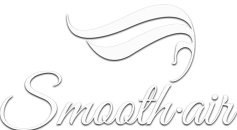
It’s not economics it’s ergonomics! Formally defined as matching work environments to human factors. Originally all about efficiency and productivity, today most people think of ergonomics in terms of injury prevention. For office workers that means appropriate chairs and keyboard heights. But other professions have their own issues. Hairdressers often experience chronic shoulder pain from raising their arms above shoulder height. Fortunately, there are many ways for stylists to lower their risk of serious as well as lesser problems.
Exactly what is ergonomics and what injuries does it prevent?
Today it’s primary goal is to improve the workplace environment in order to minimize injury and other harm from a person’s regular activities. That’s especially important when repetitive motions and stressful postures are involved. There can be sudden injuries, but more often harm accumulates over the years. The most common problems include carpal tunnel syndrome of the wrist as well as lower back pain.
It’s often necessary to consider several factors — body sizes and shapes, bio-mechanics (muscles, levers, and forces), and environmental (lighting, noise, temperature, and so on) — when designing workstations and tools. Otherwise the risks of MSD (musculoskeletal disorders) from repetitive motion, heavy tools, or unusual angles can be unacceptably high.
Shoulder Strains and Stresses… and more
You don’t have to be pro athlete to experience rotator cuff injuries. Shoulder problems are common among hairdressers and sometimes go beyond pain to serious damage.
The rotator cuff is a complex combination of muscles and tendons around the shoulder and neck. Heavy loads or long reaches progressively damage muscles, nerves, blood vessels, ligaments and tendons. Actually even small forces or holding one position for a long time can cause shoulder joint problems. Chronic shoulder pain is expect-able after prolonged, repetitive, and/or awkward movements. Sounds like blow drying, doesn’t it.
Carpal tunnel syndrome results from pressure on a particular nerve in the wrist, and isn’t limited to computer use. Any repetitive hand motion or awkward positioning can also cause ganglion cysts in the wrist and Raynaud’s disease (restricted blood supply) as well as the pain and inflammation of tendinitis.
You can lower your risk of shoulder pain by avoiding reaching above you shoulders, keeping all lifting between waist and shoulder height. Keeping everything nearby to avoid stretching to reach them also helps.
Stylists know a lightweight blow dryer is a blessing, but imagine not having to hold it at awkward angles all day.
Introducing The T-360
As a hairdresser and Salon owner for 40 years I experienced those aches and pains at work and into my evening. I even knew of several stylists who were forced to retire early.
I finally decided to do something about it, and after a great deal of work developed the Smooth-Air T-360. It’s an adjustable nozzle that fits onto just about any blow dryer. Its patented telescoping 360 swivel lets you quickly adjust it to any angle, instead of adjusting your body into uncomfortable and ultimately damaging positions. That reduces or eliminates factors that often lead to back, neck, wrist, or shoulder pain. It also helps by making it easier to blow away from the scalp while still reaching hair cuticles for superior results.
And that means a happier you, and happier customers.
References
For some specific tips particularly relevant to hairdressers, check out https://www.healthline.com/health/chronic-pain/shoulder-pain-at-work. You may also find https://ergo.yale.edu/ and https://www.huffingtonpost.com/entry/what-is-ergonomics-and-why-does-it-matter_us_5a21847fe4b05072e8b5688c interesting and useful.
If you’re experiencing sudden or severe pain or restricted movement see your doctor and consider an individual ergonomics assessment.

